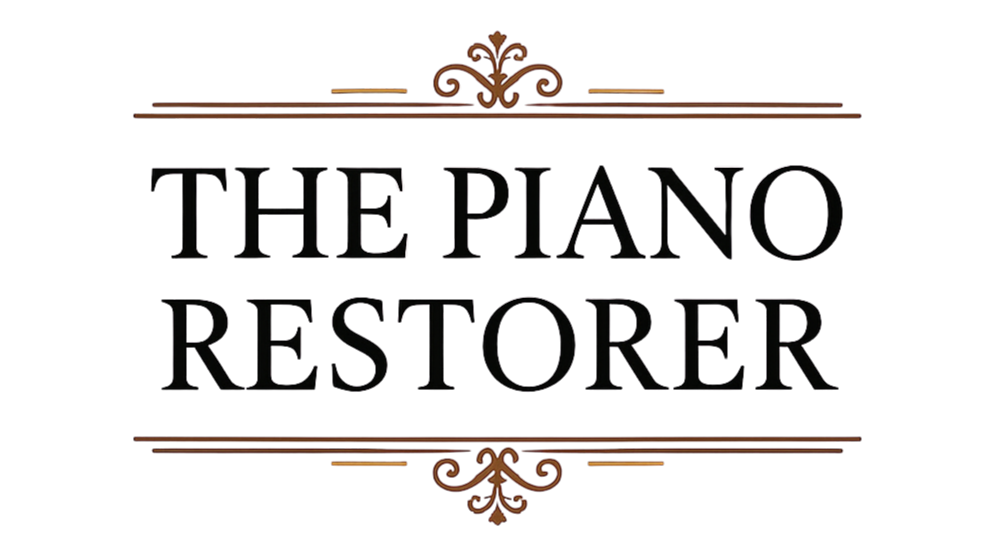What Is Involved in a Full Piano Restoration?
What Is Piano Restoration?
Piano restoration is the process of bringing an ageing or damaged piano back to optimal playing condition—structurally, mechanically, and visually. It’s more than a tune-up or minor repair. A full piano restoration is often reserved for quality instruments that are worn down but have great potential, whether sentimental, musical, or historical.
This process can turn a piano that’s barely playable into one that sounds and feels like new—or even better.
What’s Included in a Full Piano Restoration?
No two restorations are exactly alike, but generally speaking this is a step-by-step breakdown of what a comprehensive restoration typically includes:
1. Initial Assessment and Planning
Before anything begins, we inspect your piano to assess its current condition and determine what’s needed. This includes:
Checking structural integrity (frame, soundboard, bridges)
Inspecting the action, hammers, dampers, and pedals
Testing tuning pin stability and string condition
Evaluating the cabinet finish and hardware
At this stage, we’ll create a detailed restoration plan and provide an estimate.
2. Disassembly
We carefully disassemble the piano to gain access to every component:
The action (hammers, shanks, levers)
Strings and tuning pins
Keyboard and keybed
Pedal system
Cabinet and lid
In a comprehensive restoration, every component has to be examined and cleaned before reassembly, down to every screw!
3. Structural Repairs
Many older pianos have wear in key areas that affect tone and tuning. Common structural repairs include:
Soundboard repair, shimming, and refinishing (or replacement if necessary)
Bridge repair to fix splits, cracks, or worn bearing surfaces
Pinblock (Wrestplank) replacement if tuning pins no longer hold properly
Frame cleaning and repainting (iron frame)
These foundational repairs are critical to restoring tuning stability and resonance.
4. Action Rebuilding
The action is the heart of the piano’s responsiveness. Restoration may include:
Replacing hammers, shanks, and levers
Replacing or reconditioning dampers
Replacing worn bushings, felts, and leather
Levelling the keys, and regulating the action for even touch and feel
This step is essential to restore playability and control.
5. Keyboard Restoration
Depending on the piano, we may:
Repair existing ivory keys, or replace with new tops
Trim any swollen key leads
Clean and polish key tops
A properly restored keyboard feels smooth and responsive under the fingers.
6. Restringing
If the strings are rusty or dead-sounding, they are replaced with:
New high-tensile steel strings (treble)
New copper-wound, handmade bass strings
New tuning pins to match
After restringing, the piano is tuned multiple times to allow the strings to stretch, and to stabilise the pitch.
7. Cabinet Refinishing (Optional but Common)
A full restoration often includes:
Stripping the old finish
Repairing veneer or dents
Reapplying a traditional lacquer or French polish finish
Polishing or replacing brass hardware and pedals
This stage restores the piano’s visual beauty and can dramatically improve its presence in a room.
8. Regulation, Voicing, and Final Tuning
Once the piano is fully reassembled:
Regulation ensures that the action responds evenly
Voicing adjusts the tone quality by reshaping or needling hammers
Tuning is performed multiple times as the new strings stretch and settle
The Result: A Piano Reborn
When done properly, full piano restoration gives your instrument:
New life, playability, and tone
Renewed tuning stability
Beautiful, restored cabinet appearance
Increased value and longevity
Many high-quality pianos can last another 50–100 years with proper care after restoration.
Is Full Piano Restoration Right for You?
Restoration is most worthwhile if:
The piano has sentimental or family value
It was built by a respected maker (Steinway, Bechstein, Broadwood, etc.)
You want a high-quality instrument for less than the cost of a new one
Considering Restoration? Let’s Talk.
If you're wondering whether your piano is a good candidate for full restoration, we’d be happy to assess it.
Book a professional inspection or contact us today to learn more about what your piano needs—and how we can bring it back to life.
